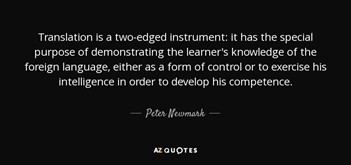By Chindy Christine
Master of Translation Studies Student
University of Western Australia,
JLTC Member No. 0161

Audiovisual Translation (AVT) has been the most thriving spectrum in translation studies for the late 15 years consisting of subtitling and revoicing, which is divided into dubbing and voice-over (Pérez-González, 2014, p. 12). Subtitling is a type of AVT in which spoken conversation is shifted into written. With the growing number of subtitled films these days, understanding the processes and challenges of subtitling is highly essential for translators as they are playing key roles in producing the translated product. This short writing will explain the benefits and limits of subtitling.
With the growing popularity of subtitles in film translation, subtitling has the benefit of enhancing two cognitive skills, which are the reading and language acquisition skills of the viewers. Having to read subtitles while watching a film, understanding what the film is about, and being entertained by it are three intertwined aspects that lead viewers to improve one of their cognitive skills, which is reading. Subtitles constitute an effective reading drill for both adults and children (Gottlieb 2004, 88), and in addition, the language skill of the viewers will also advance. Subtitles perform an essential linguistic task: a bridge of communication between two-language co-existence in the film. For instance, with the visual appearance of the viewers’ spoken language on screen, it leads viewers to pay attention to the texts which they will find it hard to avoid reading them.

On the other hand, subtitling has two limits regarding its technical and linguistic aspects. Firstly, the technical limit is related to the number of characters that can be shown on screen. As explained by Nicolae (2018, 52), subtitling has to consider spatiotemporal limitation in which one displayed page of subtitle can consist of maximum 42 characters per line, no more than 2 lines, and the reading speed is 21 characters/second. With this limitation, translators are challenged to adjust the audio of SL to a readable text of TL. If there are long dialogues which have significant messages (especially those containing cultural elements) in a film, translators should apply their strategic thinking to make the translated text suitable with the scene duration. Secondly, related to the linguistic aspect, shifting mode in the subtitling process will occur from spoken SL to written TL which results in certain features of speech that will not automatically be depicted in the target text (Eslamieh and Javankhah, 2018, p. 163). When there is a scene of jokes in a movie, not all viewers can join the actors’ laughter. Readers who manage to understand the humorous feature of speech may capture the jokes, but viewers who have not finished reading the text or who have read all the subtitles but do not understand the written humour may miss that funny dialogue in the film.
To sum up, subtitling enables viewers to gain benefits by leading them to improve the skills of effective reading and language acquisition. However, subtitling also faces two drawbacks related to the spatiotemporal limitation in its visual product and in its linguistic aspect due to the shifts of spoken SL into written TL.
Works Cited
Eslamieh, R., and N. Javankhah. 2018. “Domestication and Foreignisation in Dubbing and Subtitling of Duncan Jones’ English Movie ‘Warcraft’ into Persian.” International Journal of English Language & Translation Studies 162-170.
Gottlieb, Henrik. 2004. “Language-political implications of subtitling.” In Topics in Audiovisual Translation, by Pilar Orero, 83-100. Amsterdam/Philadelphia: John Benjamins Publishing Company.
Nicolae, Cristina. 2018. “On Audiovisual Translation: Dubbing.” Romanian Journal of English Studies 51-58.
Pérez-González, Luis. 2014. Audiovisual translation: theories, methods and issues. New York: Routledge.

